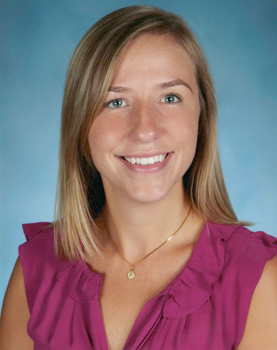
Sabina Kobinski
Traveling to Poland for Auschwitz: The Past is Present will be a homecoming of sorts for Sabina Kobinski, who will return to her family’s homeland and the place where her own uncle was imprisoned during the Holocaust.
Kobinski will join 24 other teachers from around the world to help commemorate the 70th anniversary of the liberation of Auschwitz in Poland by learning new methods for teaching the Holocaust. They were chosen to attend the Auschwitz: The Past is Present professional development program led by USC Shoah Foundation and Discovery Education to commemorate the 70th anniversary of the liberation of Auschwitz. The educators from 11 different countries representing four continents will attend a four-day workshop designed to deepen their understanding of the historical landscape of Poland before, during and after the Holocaust and increase their knowledge of authentic sites including Auschwitz-Birkenau
Kobinski teaches history at Archbishop Molloy High School in Queens, New York. Her parents were born in Poland around World War II and she speaks fluent Polish. Her great uncle, a priest named Father Raymond Radzieta, was taken as a political prisoner as he performed mass in Radom, Poland, and was imprisoned in Auschwitz, Gross Rosen, Sachsenhausen and Dachau, where he was liberated in 1945.
Because of her family’s personal connection to the Holocaust, Kobinski said she has always been fascinated by the subject. As a teacher, she said that students, too, are more interested in world events when they include personal stories and artifacts.
Kobinski said her students are already excited to hear about her experiences on the trip. Since most of her students will probably never get the chance to visit Auschwitz, she wants to bring the feeling of the historical sites to them, through photographs, testimonies, and her own emotions that she felt while she was there.
“This experience will allow me to put a human face on an event which many students believe they are far removed from,” Kobinski said. “The stories and visuals I would bring back to the classroom would not only make me a better teacher, but they would also enhance my presentations and make my lessons more meaningful.”
She also intends to analyze statistics, maps and other primary sources with her students to teach them about the hatred in the 1940s and think about how they can change the world today.
“This event can foster a discussion about a number of themes such as hatred found in the past and present, the feeling of community among people who have experienced similar trauma, and learning from the past to prevent similar mistakes and conflicts from arising again,” she said.